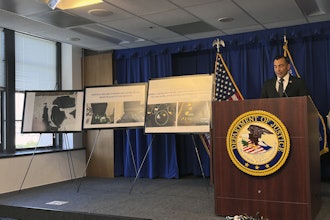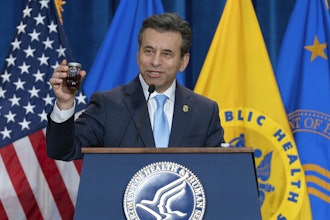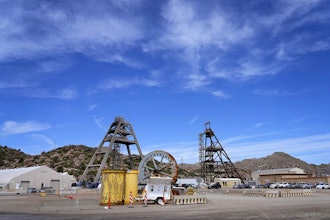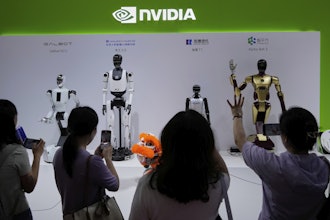
SACRAMENTO, Calif. (AP) — As California regulators explore new rules to put self-driving semitrucks on the road, labor unions are rushing to the state Legislature to ask for a new law they say will protect their jobs — the start of a debate that could shape the future of the nation's nearly $900 billion trucking industry.
California already has rules governing self-driving cars and delivery trucks that weigh less than 10,001 pounds (4,536 kilograms). Now, the California Department of Motor Vehicles is gathering information for potential new rules that would let self-driving semitrucks on the road that can weigh up to 80,000 pounds (36,287 kilograms).
The rulemaking process takes a long time, and is mostly crafted by officials in Democratic Gov. Gavin Newsom's administration. Labor unions aren't waiting around for that to happen. Instead, they've asked the state Legislature — where they have considerably more influence given their prolific campaign contributions — to intervene.
On Monday, more than 100 of members of the International Brotherhood of Teamsters joined Assembly member Cecilia Aguiar-Curry, a Democrat from Winters, as she announced new legislation to require all self-driving semitrucks have a human driver present to oversee them.
Labor leaders focused much of their messaging Monday on public safety — an argument seemingly tailored to appeal to the driving public.
Mike Fry, a San Francisco-based truck driver with 27 years of experience, told a frightening story about a passenger car losing control and getting wedged beneath his trailer. Fry said he knew not to slam on the brakes, so he slowly made his way to the side of the road and drove next to some bushes that dislodged the car, which he said "popped the car out like a Pop-Tart."
"You cannot program instinct into a computer," Fry told the crowd. "There is no way they can think like that."
But beyond safety issues, labor unions see the technology as a threat to their jobs. Speakers at the rally attacked what they view as corporate greed, name dropping Elon Musk, the billionaire head of electric vehicle company Tesla. The company has promised to deliver semitrucks that would be able to follow each other autonomously in a convoy.
Lindsay Dougherty, vice president of the western region of the International Brotherhood of Teamsters, said California has 500,000 commercial truck drivers on the road, giving it outsized importance in terms of shaping national transportation policy.
"So goes California, so goes the rest of the nation," she said. "If we lose this, we're never getting them back."
Multiple companies are testing self-driving technology for semitrucks, and many have eyed California as a place to eventually deploy the technology given its busy ports that require lots of trucks to transport goods to warehouses.
The Autonomous Vehicle Industry Association, an industry trade group that supports self-driving technology, has argued autonomous trucks would make for safer roadways, asserting computers make fewer mistakes than humans. Asked about Aguiar-Curry's bill, the group pointed to a statement from Executive Director Jeff Farrah issued last week in response to a public hearing on potential new state regulations.
"It's important to remember that it will take time for AV trucks' full potential to be reached in the Golden State, with deployment taking place gradually over the years to fill in current and future labor shortages," Farrah said. "Therefore, it is imperative the California DMV begin a rulemaking for development of AV trucks so consumers and businesses can realize these opportunities while also preparing the workforce of tomorrow for this shift."
Aguiar-Curry said she isn't opposed to fully self-driving semitrucks, but said she believes the technology isn't ready.
"There may be a time, 30 or 40 years from now — and I won't be around to see it — where hopefully that they might be able to do that," she said. "This isn't the time to do it. It's all about timing."






















